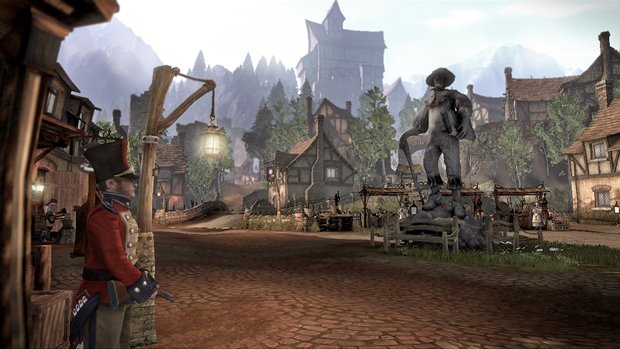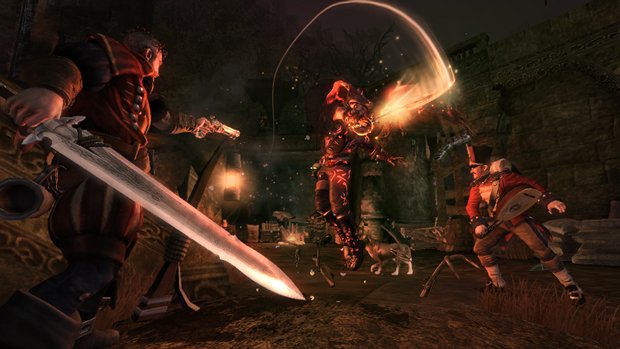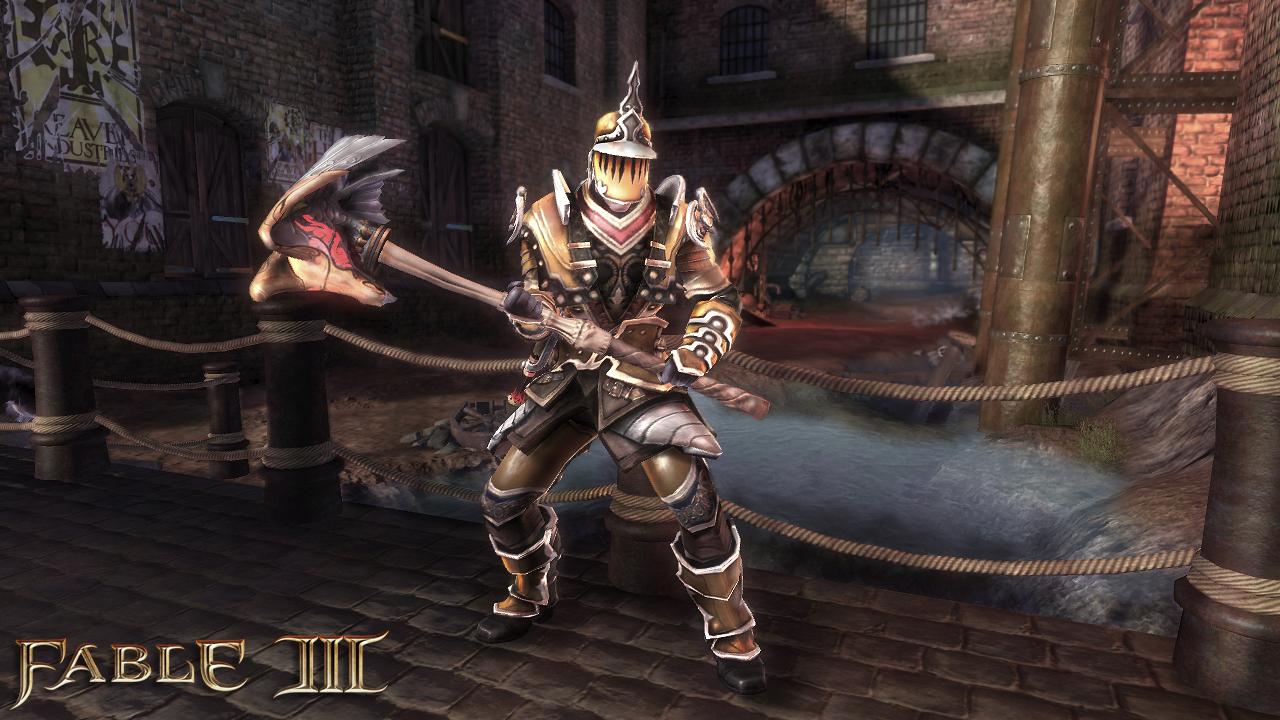Why you can trust GamesRadar+
Those idiosyncrasies all stem from a philosophy of hands-on interaction with everything. There are no menu shortcuts here, outside of a pull-down quest list allowing quick-travel to regions and side-missions. Want to change outfits? Walk up to a costume on amannequin and choose the items you want. Want to change weapons? Walk into your armoury and browse the racks for the gun and blade of your choice. Even magic is now powered by wearable gauntlets rather than Fable II’s character-inherent Will ability, meaning that everything you do and every change you make to your character is by way of physical interaction with an in-game item or environment.
It feels unnecessary and unwieldy for a while, especially when you have to browse shop items by walking up to and inspecting each one individually on a plinth. Though the lesser emphasis onbuying new equipmentthis time around helps, weapons now gaining buffs via Achievement-style challenges, andwith some perseverance, the logic behind it all starts to shine through. By physically interacting with objects, equipment and characters on a one-to-one level, your attachment to Fable III’s world becomes powerfully tangible. And so the Fable franchise’s central conceit of accountable moral decisions really starts to fly like never before.
But the irony at the centre of Fable III is that while on the one hand it strives to make things more real, some of the methods it uses also add an extra degree of gamey artificiality. With customisation menus stripped out in favour of the walk-in wardrobe approach, Fable III provides you with The Sanctuary, a central control room manned by the John Cleese-voiced Jasper, which houses all your gear as well as a quick-travel map. The need to make it constantly accessible requires a suspension of belief as you jab the Start button to warp immediately to and from its safe confines (even in the midst of battle). But just imagine it as a Monty Python-run Star Trek transporter room/loot pile and you’ll be fine.

Similarly, while levelling up still happens, it’s now represented by a physical environment, the metaphorical Road to Rule. Everything you do, from combat, to character interactions, to quest completion earns you Guild Seals, Fable III’s reskinned XP equivalent. After major story missions you’ll be warped to the ethereal road and presented with treasure chests which need to be unlocked with your seals. The chests contain the various combat buffs and character abilities that standard levelling up would generally provide automatically. Again, it at first feels like an overly elaborate reworking of a perfectly good system, but the sense of tangibility it adds to the levelling process, and thus your attachment to your character, justifies its seemingly contrived nature.

Perhaps the most surprising change though, is a simple one. Fable II’s gestural interaction system, which allowed you to shape your relationships with NPCs by way of a selection wheel of multiple social actions, has been vastly scaled back. You can now only interact with one character at a time while locked into an invisible box with them, and your gesture options are limited to a handful of pre-designated, button-mapped options (though your options are expandable via the Road to Rule). Far from the dumbed down remix it seems though, this again succeeds in making all of your actions far more meaningful. Working to make a single person more affectionate, or even loving, if you're in a family-starting mood, feels in practice far more significant than having an entire town of fans mindlessly following you in blind appreciation, Fable II-style.

This strive to emotionally engage isn’t just a means to its own end. It has a very specific purpose. And that purpose is to ensure that you go through an absolute moral meat-grinder upon your elevation to ruler of Albion. With the rebel-rousing quests complete, you’ll take over the throne aroundthree-quarters of the way through the main story. From this point on, you’ll have an in-game year with which to sort out Albion’s socio-political woes. Each main story mission begins with a couple of throne-room-based hearings, during which you’re presented with a decision to make about the country’s future. And while the series has always delighted in tough moral conundrums, at this point Fable III will start absolutely kicking the crap out of you.
More info
| Genre | Role Playing |
| Description | Third instalment of the flagship Xbox 360 RPG, first unveiled at Gamecom 09. |
| Franchise name | Fable |
| UK franchise name | Fable |
| Platform | "Xbox 360","PC" |
| US censor rating | "Mature","Mature" |
| UK censor rating | "16+","16+" |
| Release date | 1 January 1970 (US), 1 January 1970 (UK) |




